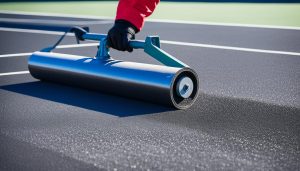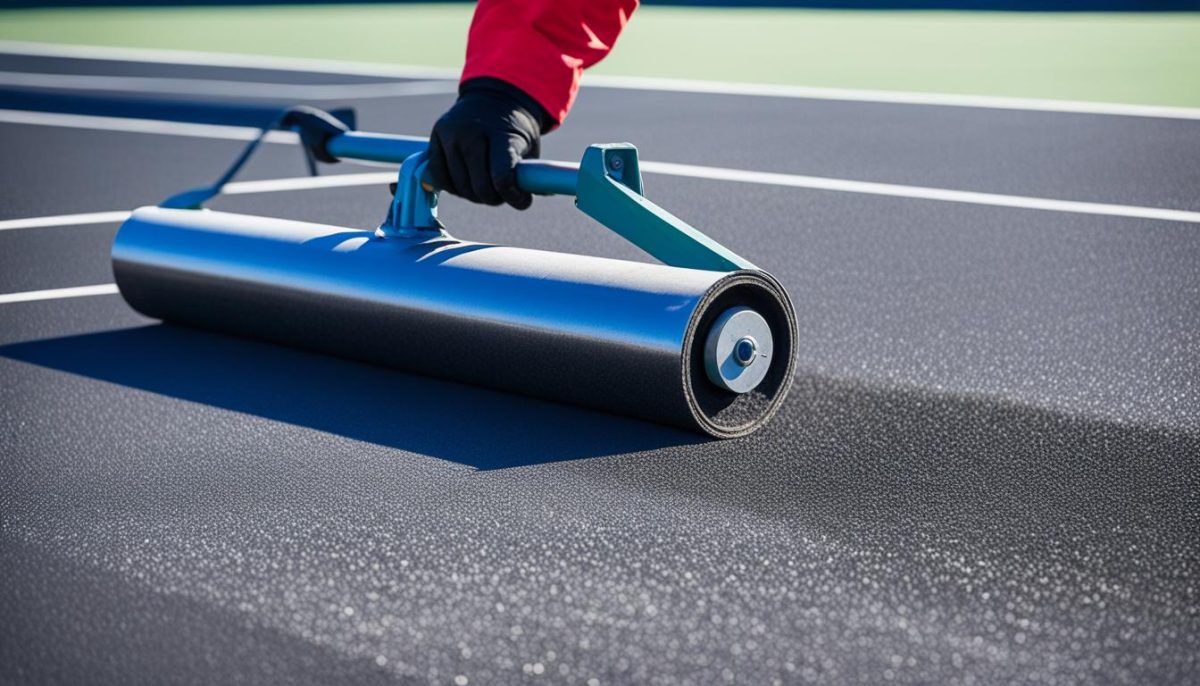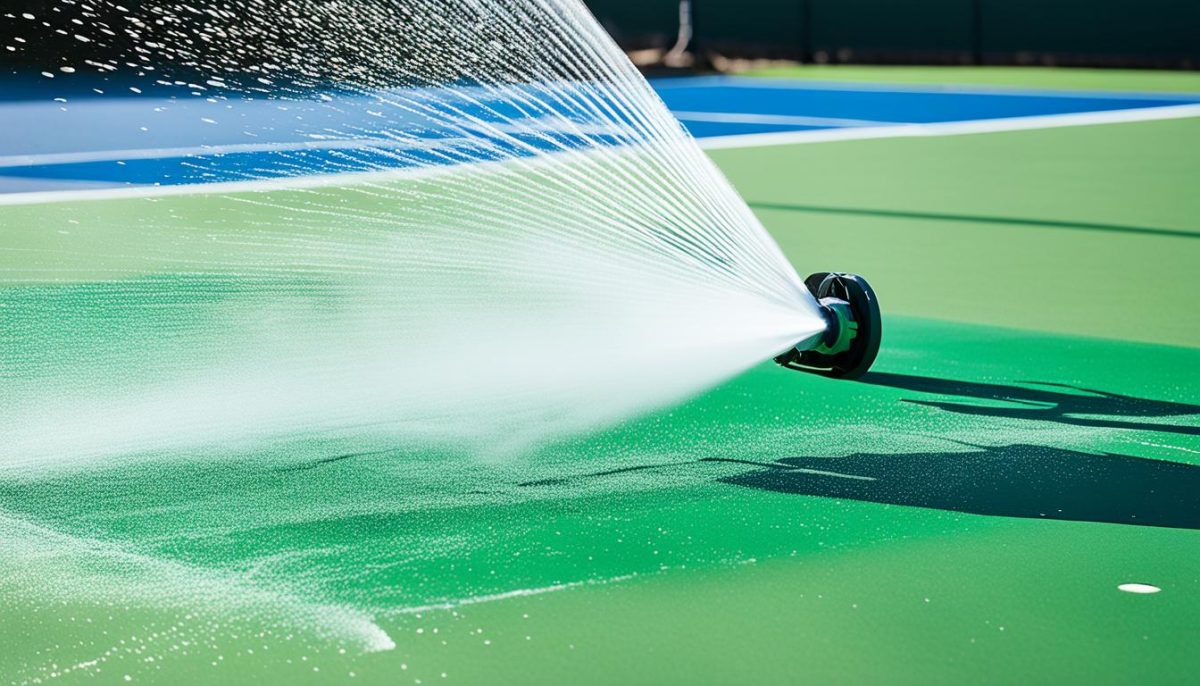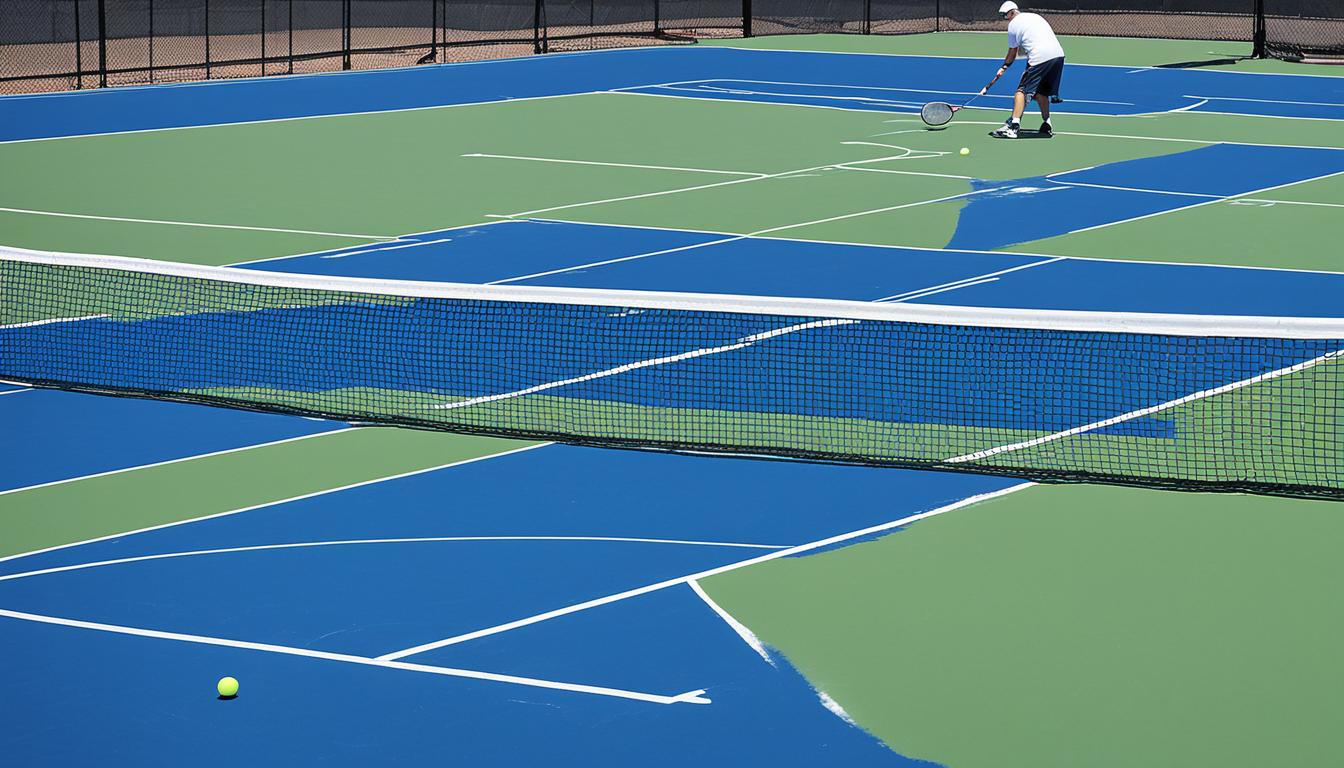Have you ever wondered how tennis courts maintain their pristine condition despite constant use and exposure to the elements? It’s all thanks to proper resurfacing and maintenance. Whether you’re a tennis enthusiast or a club owner, understanding the process of how to resurface a tennis court can help you ensure optimal playability and extend the lifespan of your court.
Resurfacing a tennis court involves more than just applying a new coat of paint. It requires a systematic approach that includes preparation, specific resurfacing techniques, and ongoing maintenance. By following these 8 essential steps, you can revitalize your tennis court and create an ideal playing surface for both recreational and professional players.
Preparation Steps for Tennis Court Resurfacing
Proper preparation is essential before resurfacing a tennis court to ensure optimal results. Follow these steps to prepare your tennis court for resurfacing:

- Remove Debris and Plant Growth: Begin by clearing the court of any debris, including leaves, twigs, and other loose materials. Use a broom or rake to sweep the surface thoroughly. Additionally, remove any plant growth, such as weeds or grass, that may have emerged through cracks or in between the court lines. This will provide a clean and smooth surface for the resurfacing process.
- Power Wash the Surface: Next, power wash the entire tennis court surface to remove dirt, stains, and mildew. Use a high-pressure washer to effectively clean the surface, ensuring all areas are thoroughly cleaned. This step will help in achieving a clean and vibrant playing surface, enhancing the overall appearance of the court.
- Fill Cracks and Holes: Inspect the court for any cracks or holes that may have formed over time. These imperfections can negatively impact the resurfacing process, affecting the final result and the court’s longevity. Fill any cracks or holes with suitable patching material, ensuring a level surface. Smooth out the patched areas for a seamless transition during resurfacing.
- Sand the Surface: To remove rough spots and provide a smooth playing surface, sand the entire court using a mechanical sander. This will help in leveling the surface and optimizing the adhesion of the subsequent resurfacing layers. Pay attention to any uneven areas and ensure they are properly addressed during this phase.
- Level the Surface with a Laser Beam: Use a laser beam leveling system to ensure the playing surface is perfectly level. This step is crucial for achieving consistent ball bounce and maintaining proper game dynamics. Adjust the court’s surface as necessary to achieve accurate leveling throughout.
- Address Additional Repairs: Take this opportunity to address any other necessary repairs, such as fixing drainage issues or replacing damaged fencing. It’s important to ensure the overall integrity of the tennis court beyond the resurfacing process. Any repairs should be completed before proceeding with the resurfacing steps.
- Meet Local Regulations and Standards: Before starting the resurfacing process, ensure that you comply with all local regulations and standards. This may include obtaining any necessary permits and scheduling inspections. Adhering to these requirements will ensure a smooth and legally compliant resurfacing project.
By following these preparation steps, you will be well-prepared for the resurfacing process, setting the foundation for a successful and long-lasting tennis court transformation.
Resurfacing Techniques for Tennis Courts
When resurfacing a tennis court, it is crucial to follow the right techniques to ensure a smooth and durable playing surface. Here, we outline the step-by-step process for a tennis court resurfacing that will leave your court looking brand new and ready for action.
1. Applying the Acrylic Resurfacer
The first step in the tennis court resurfacing process is to apply a base coat of acrylic resurfacer. This serves as a bonding agent, ensuring that the subsequent layers adhere properly to the existing surface. The acrylic resurfacer not only improves the appearance of the court but also helps to fill in any imperfections, creating a smoother playing surface.
2. Multiple Coats for Optimal Results
After applying the base coat, it is essential to add multiple coats of acrylic resurfacer. Each coat should be allowed to dry completely before applying the next one. This layering process helps to build a strong and durable surface. The number of coats required may vary depending on the condition and thickness of the existing surface. Thicker coatings provide better protection and longevity for the tennis court.
3. Achieving an Even Surface
Once all the resurfacing coats are applied, it is crucial to achieve an even surface. A squeegee is used to spread the resurfacer evenly across the court. This technique ensures a smooth finish and eliminates any uneven patches that may hinder gameplay. It is important to pay attention to detail during this step to create the best playing experience.
4. Professional Line Marking
After the final coat of resurfacer has dried, it’s time to add the court lines. Professional line marking machines are used to ensure accurate and precise markings. Properly marked lines are essential for defining the boundaries of the court and providing players with clear visual references during gameplay. The line marking process requires precision and attention to detail to ensure the lines are straight and correctly aligned.
5. Installing Net Posts
As a final touch, net posts are installed at this stage. It is essential to ensure that the net posts are level and mounted correctly, providing stability and security during gameplay. Proper installation of net posts enhances the overall appearance and functionality of the tennis court.
By following these resurfacing techniques, you can transform your worn-out tennis court into a pristine, high-performance surface that will delight players and spectators alike.

| Resurfacing Techniques | Benefits |
|---|---|
| Applying Acrylic Resurfacer | Improved bonding and filling of surface imperfections |
| Multiple Coats for Optimal Results | Enhanced durability and longevity |
| Achieving an Even Surface | Smooth and consistent playing experience |
| Professional Line Marking | Clear and accurate court boundaries |
| Installing Net Posts | Enhanced stability and aesthetics |
Maintenance Tips for a Resurfaced Tennis Court
Proper maintenance is essential to prolong the lifespan of your resurfaced tennis court and ensure its optimal condition. By following these maintenance tips, you can keep your court clean, prevent damage, and provide a safe playing surface for years to come.
Regular Cleaning
To keep your tennis court in top shape, regular cleaning is necessary. Sweeping the court with a broom or using a leaf blower will help remove debris like leaves, dirt, and dust. This simple maintenance task prevents these elements from accumulating and potentially causing damage to the surface.

Pro Tip: Regular power washing is also recommended to thoroughly clean the court and remove deep-seated dirt and grime.
Inspection and Crack Repair
Frequent inspections are vital to identify any cracks or signs of wear and tear. Inspect the court surface carefully, including the edges and areas around the net posts. If you notice any cracks, it’s crucial to address them promptly to prevent further damage. Small cracks can be repaired using tennis court crack fillers or patching materials, while larger cracks may require professional intervention.
Pro Tip: Consistently monitoring and repairing cracks will help maintain the integrity of the court and prevent water from seeping through, which can cause significant damage over time.
Professional Maintenance Services
While regular cleaning and inspections are essential, it’s recommended to enlist professional maintenance services to ensure the long-term quality of your tennis court. Companies specialized in tennis court maintenance offer services like annual resurfacing, crack repair, line repainting, and more. These experts have the knowledge, experience, and equipment to handle the specific needs of your court, keeping it in optimal condition throughout the seasons.
“Professional maintenance services can save you time and effort, allowing you to focus on enjoying the game without worrying about the upkeep of your tennis court.” – Tennis Court Maintenance Specialists
By following these maintenance tips and investing in professional services, you can maximize the longevity of your resurfaced tennis court, ensuring it remains safe, visually appealing, and provides an enjoyable playing experience for tennis enthusiasts of all levels.
Explore Rome Clay Courts
Benefits of Tennis Court Resurfacing and Conclusion
Resurfacing a tennis court has numerous benefits that can rejuvenate your court and ensure optimum performance. With proper resurfacing techniques and regular maintenance, you can revitalize your tennis court to its former glory and enjoy the game with enhanced playability.
One of the key benefits of tennis court resurfacing is its ability to enhance the longevity and performance of your court. Over time, tennis courts can develop cracks and damage, affecting the overall quality of the playing surface. Resurfacing allows you to repair these issues, ensuring a smoother and safer playing experience for players of all levels.
In addition to fixing cracks and damage, resurfacing can also improve the color and visibility of your tennis court. Faded or worn-out colors can make it difficult for players to track the ball, affecting their game. By resurfacing your court, you can restore vibrant colors and clear visibility, creating a more enjoyable and professional-looking playing surface.
Furthermore, tennis court resurfacing guarantees a consistent playing surface. Over time, the original surface can become uneven and rough, leading to inconsistent ball bounces and potential injuries. Resurfacing smoothens out any irregularities, creating a uniform surface that promotes fair play and reduces the risk of injuries.
In conclusion, resurfacing your tennis court offers a wide range of benefits that contribute to its longevity, performance, and overall aesthetics. By investing in proper resurfacing techniques and regular maintenance, you can transform your tennis court into a high-quality facility that provides optimal playability. To achieve the best results, consider consulting a professional tennis court resurfacing company that specializes in rejuvenating tennis courts.






